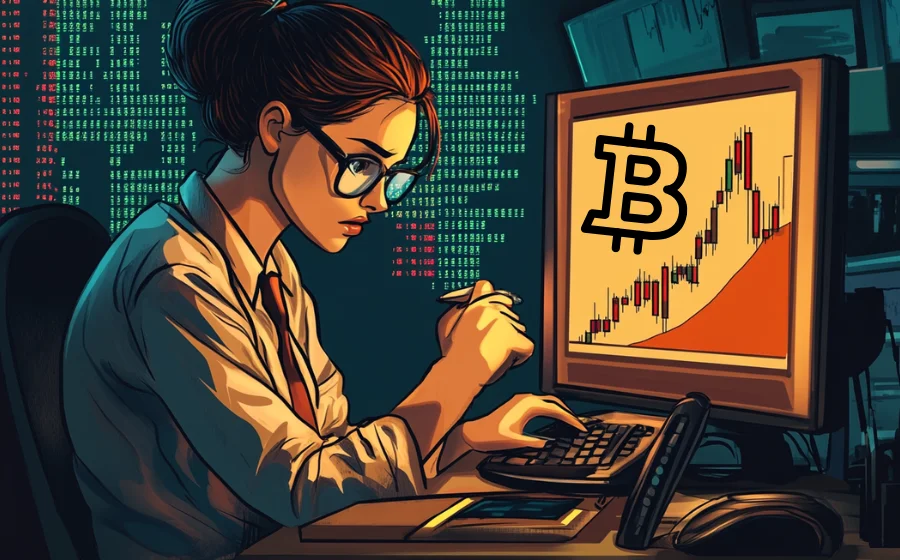
KEYTAKEAWAYS
- Closing a Position ends a trade by taking the opposite action—selling to close a long or buying to close a short. It's not always the same as selling an asset.
- Spot and futures closing actions differ in leverage, risk, and timing. Futures offer more flexibility but higher risk due to margin requirements.
- To avoid forced liquidation, set clear stop-loss levels, manage leverage wisely, monitor market trends, and trade with discipline, not emotion.

CONTENT
Learn what a Closing Position means in crypto, how it differs from selling, and how to manage trades in both spot and futures markets to avoid forced liquidation.
WHAT IS CRYPTO CLOSING POSITION?
In crypto trading, a Closing Position refers to the act of ending an existing trade by executing the opposite transaction. This process is essential for finalizing a trade, whether to take profit or to cut losses.
🔎For example:
- If an investor initially buys Bitcoin (goes long), they complete a Closing Position by selling the same amount of Bitcoin—this is known as “closing a long.”
- Conversely, if an investor initially sells Ethereum (goes short), they close the position by buying back the same amount of Ethereum—this is called “closing a short.”
Unlike a simple “sell” action, a Closing Position is a strategic part of the trading cycle. It marks the official conclusion of an open position, allowing the investor to realize gains or losses and eliminate further market exposure.
In summary, a Closing Position is a critical concept in crypto trading. Whether you’re going long or short, you must close the position to complete the trade and lock in your results.
>>> More to read: What Does Crypto Liquidation Mean? A Beginner’s Guide
CLOSING SPOT VS. FUTURES POSITION IN CRYPTO
A Closing Position refers to the act of ending or exiting an open trade. While this concept applies to both spot and futures trading, the mechanisms and risks involved can differ significantly.
1. Closing a Futures Position
In futures trading, a Closing Position involves entering an opposite trade—buying or selling a contract with the same asset, size, and expiration date but in the opposite direction—to exit the existing position.
✅ If you hold a long futures position, you close it by selling an equivalent contract.
✅ If you hold a short futures position, you close it by buying the same contract.
Because futures trading often involves leverage, even small price movements can lead to amplified gains or losses. This makes Closing a Position in futures more risky. In addition, futures markets require margin maintenance—if prices move against the position, traders may face margin calls or even forced liquidation by the platform.
However, futures offer more flexibility: traders can close their position at any time before expiration to secure profits or limit losses.
2. Closing a Spot Position
In spot trading, Closing a Position means selling the exact amount of a crypto asset you previously bought. There’s no expiration date, leverage, or margin requirement—just a straightforward buy-then-sell transaction.
To close a spot position, the trader must find a buyer in the market and agree on a price and terms of settlement. Since there’s no leverage, the price fluctuations have less impact on the investor’s overall risk.
That said, spot markets are still influenced by supply and demand, regulatory changes, and market sentiment, which can cause significant volatility. Also, spot trading is less flexible in some cases, since settlement relies on finding a counterparty and negotiating terms, which may take time.
📌 Futures vs. Spot
Both spot and futures markets use Closing Position strategies, but the execution, risk, and flexibility differ:
- Futures: Higher risk, higher leverage, flexible exit timing.
- Spot: Simpler, lower risk, but requires real asset transfer and active buyers.
Understanding how Closing a Position works in different trading environments helps investors manage risk more effectively and make informed decisions in the crypto market.
>>> More to read: What is Crypto Futures Trading? Maximize Your Crypto Gains
IS CLOSING A POSITION THE SAME AS SELLING?
Many beginners in crypto or traditional markets often confuse Closing a Position with simply Selling. While the two actions may overlap in some cases, they are not the same. Understanding the differences is key to building solid trading strategies.
1. Definition: Closing Position vs. Sell
✅ Closing Position
This refers to the act of ending an open trade by executing the opposite action of the initial position. For example, closing a long position involves selling the asset, while closing a short position requires buying it back. The goal is to finalize the trade, lock in profits or losses, and eliminate exposure to market risk.
✅ Sell
Selling means transferring ownership of an asset (like crypto or stocks) to someone else in exchange for cash or another asset. It can be done for various reasons: taking profit, reallocating a portfolio, or freeing up capital. Selling does not necessarily mean closing a trade—it could be a simple liquidation of holdings.
2. Similarity: Closing Often Involves Selling
In some cases, Closing a Position does involve Selling.
🔎 For example:
- Buying 1 BTC to go long → Selling 1 BTC to exit the position = Closing a Long via Sell
So yes, a closing action may involve a sell, but not all sales are closings. For instance, selling crypto from your wallet (without opening a prior trade) is not closing a position.
3. Key Differences: Why They’re Not the Same

📌 Why This Matters
Although Closing a Position often includes selling, it’s a strategic trading action with a clear purpose—ending a position and finalizing exposure. Selling, on the other hand, is broader and may not relate to an open trade at all.
👉 Not all selling is closing. Not all closings involve selling.
Properly distinguishing the two helps you:
- Avoid confusion in spot vs. contract trading
- Understand margin and liquidation mechanisms
- Build smarter trading and risk management strategies
>>> More to read: What Are Crypto Spot & Futures Trading? Key Differences Explained
HOW TO AVOID FORCED LIQUIDATION IN CRYPTO?
In the highly volatile crypto market, Forced Liquidation can lead to significant losses. Here are key strategies to help reduce the risk of being liquidated:
1. Set a Clear Trading Plan
Always define your stop-loss and take-profit levels before opening a position. Exit the trade when the price hits these thresholds to avoid deeper losses or to secure profits.
2. Stay Updated on Market Trends
Use technical and fundamental analysis to monitor price trends. Pay close attention to major events, economic data releases, and policy changes that may impact market direction—adjust your strategy accordingly.
3. Manage Leverage and Position Size
Avoid concentrating your funds in a single asset. Diversify your portfolio and use leverage conservatively based on your risk tolerance. Overleveraging is one of the most common causes of liquidation.
4. Trade with Discipline, Not Emotion
Emotional decisions often lead to poor trades. Stay calm during market swings, and regularly review your strategy and performance. Make necessary adjustments to stay aligned with current market conditions.
>>> More to read: Crypto Trading Exit Strategies: 4 Ways to Secure Your Profits
▶ Buy Crypto at Bitget
ꚰ CoinRank x Bitget – Sign up & Trade!


















